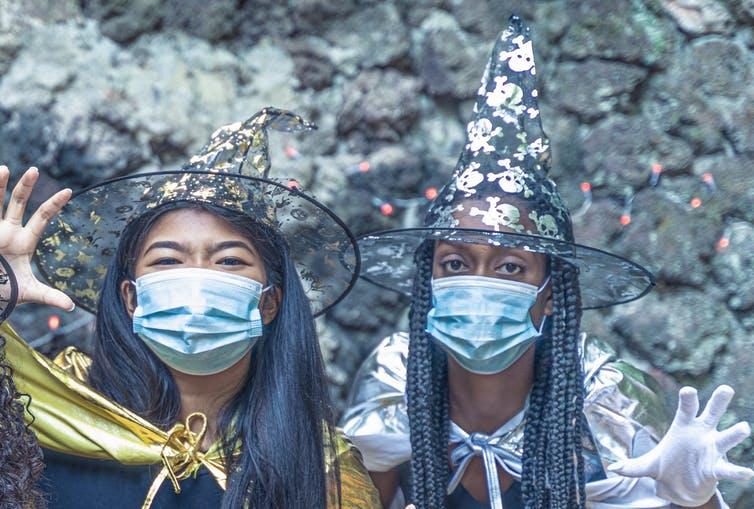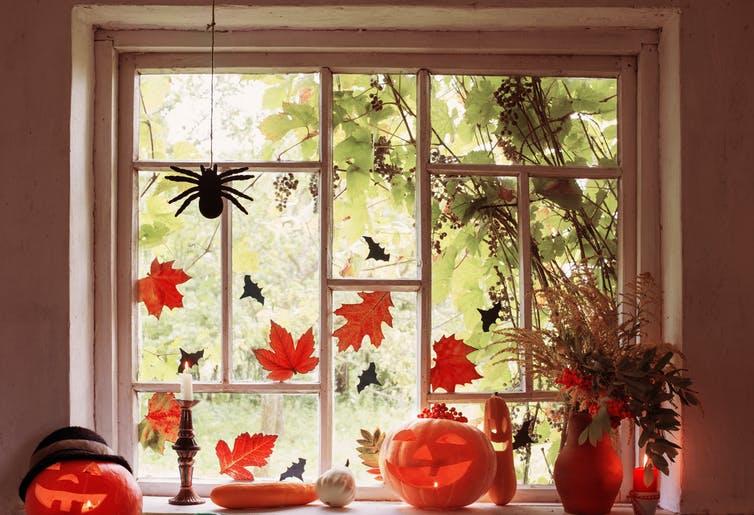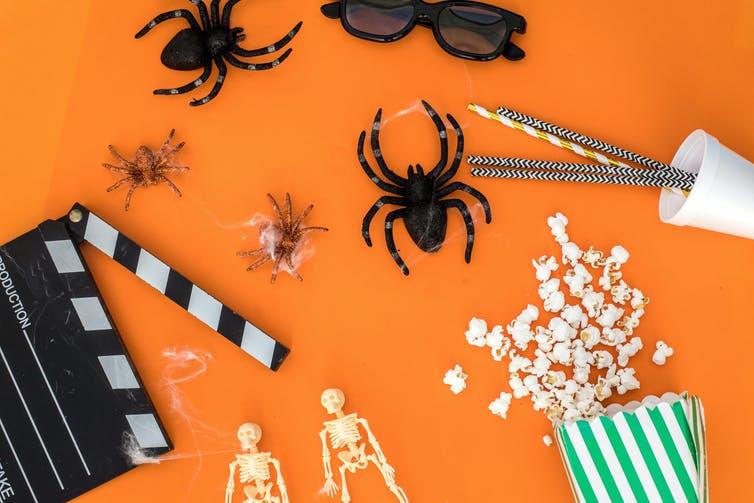Oct. 20, 2020
5 tips for a safe Halloween during COVID-19 — and what to do if trick-or-treating is cancelled

Since the start of the COVID-19 pandemic, families have had to adjust to a number of health regulations and restrictions. Much to the dismay of millions of children, this may apply to Halloween trick-or-treating as well.
National health authorities in Canada have said Halloween trick-or-treating can go ahead, depending on local public health direction, with careful planning and preparation to minimize risks of viral transmission.
Due to local infection numbers, some cities or regions recommend skipping trick or treating.
As trick-or-treating is largely an outdoor activity, it is on the safer side of the spectrum when social distancing and mask wearing are maintained. However, many parents are reportedly feeling uncertain about trick-or-treating given the potential for increased virus transmission when collecting candy door-to-door.
A recent poll conducted by Leger and the Association for Canadian Studies suggests that 52 per cent of parents won’t let their children trick-or-treat this year.
Whether you decide to allow your child to trick-or-treat or not, it’s important to plan out how you will talk to them about this decision. Drawing on our expertise in child development and infectious disease, we’re here to help make an informed decision about Halloween this year and provide some tips for communicating your decision to your child effectively.
If trick-or-treating is a go in your family
If your family has decided to trick-or-treat or give out candy, you’ll want to sit down with your kids and lay some ground rules that take the pandemic into consideration.
Root the conversation about trick-or-treating regulations in what you know about the virus within your community. Safety varies between communities, and in areas of the country with few COVID-19 cases, the risk remains low. However, in hotspots, the risk rises.

Walking your child through what to expect on Halloween will help kids accept a plan.
Shutterstock
Come up with a clear plan for children to follow so they can keep themselves and others safe when trick-or-treating. Write down or walk through what your child can expect and what is expected of them well before the night. When parents do this, children feel more comfortable and prepared, which helps them buy into the plan.
Central items this plan should include:
-
Continue to use fabric or surgical masks. Some children may be tempted to replace fabric or surgical masks with Halloween masks, but the fabric of Halloween masks may not be sufficient to prevent viral transmission. Don’t draw on masks. Some markers or paint could have solvents that would be directly inhaled by the child. It could also be possible to inadvertently tear a disposable mask with friction.
-
Avoid gathering at doors. Instead, think of lining up to get candy the same way most stores have set up check-out lines, with only one person at a time at the door. While some who are shelling out candy may find creative ways to create more distance between themselves and trick-or-treaters, such as sliding candy down a tube or chute, others may follow recommended practices of using tongs to distribute candy or pouring pre-packaged candy onto a tray for children to choose.
-
Health authorities are recommending to “keep it local, keep it small,” which means staying within one’s local neighbourhood and in small trick-or-treating groups. Ideally these groups should be build around the children’s pre-existing cohorts or bubbles.
-
Encourage children to bring — and use — hand sanitizer as they are likely to be touching their faces more than usual while adjusting their costumes.
-
Have children wash their hands thoroughly at home before they start digging into their loot.
Although you may want to encourage your child’s independence by letting them trick-or-treat without you if it is developmentally appropriate, you also want to ensure your child has the maturity and ability to manage these added pandemic-specific suggestions.
Read more: When can kids trick-or-treat without adults?
If you don’t think your child is capable of following through with your COVID-19 Halloween plan, you may consider putting on a costume and joining them in the local tour of neighbours’ porches this year!

Decorating windows, a balcony or a porch is one way to keep the festive spirit.
Shutterstock
If trick-or-treating is a no-go
Although it may be hard to tell your child they can’t partake in trick-or-treating, an honest conversation about the specific reasons for why they can’t will help them process the information. Research shows that parents who are open to discussion and collaboration tend to be most successful in conversations with their children.
When discussing this decision with your child, tailor the details of this conversation to their age. For children under six, you may want to emphasize that this is to keep them and others safe. For children older than six, emphasize that this choice plays an active role in reducing the transmission of the virus and that missing Halloween this year is likely a one-off.
If you child indicates that they are upset or frustrated about missing out on the Halloween tradition this year, start by taking the time to listen and validate their feelings. It’s a treasured holiday for most children and it’s understandable that they feel miffed for missing out.
Be compassionate and let them know that feeling disappointed and upset is completely understandable. For instance, you could share something along the lines of: “I understand why you feel sad that you can’t trick-or-treat this year, I know how much you love that tradition.”
While it’s hard to see our children upset, it also presents an opportunity to help them learn some problem-solving skills. You can encourage them to brainstorm some options and resist the urge to find all the solutions for them. When children generate solutions to their problems, it helps give them a sense of control over the situation and an enhanced degree of satisfaction.
For example, research has shown that children are more likely to be motivated and buy into plans if they had a say in developing them. The executive functioning skills they learn through problem-solving is also good for their brain health.

Focusing on planning decorating or a Halloween movie night means you can still have fun with other Halloween traditions.
Shutterstock
Although door-to-door trick-or-treating may not be an option for your family, there are plenty of alternatives. Some ideas could include a candy scavenger hunt in the house or park, a Halloween movie night or a virtual costume show-and-tell with family and friends. And even though you aren’t trick-or-treating, you can still have fun with other Halloween traditions, like pumpkin carving and lawn decorations.
Read more: Create new Halloween rituals with healthy eating and playful living
Ultimately, it will be up to parents to decide whether they are comfortable with trick-or-treating this year. If you want to take a more collaborative approach with your child, you can discuss the pros and cons of trick-or-treating and together come to a decision. This approach may be particularly important for the growth and development of older children and adolescents.





